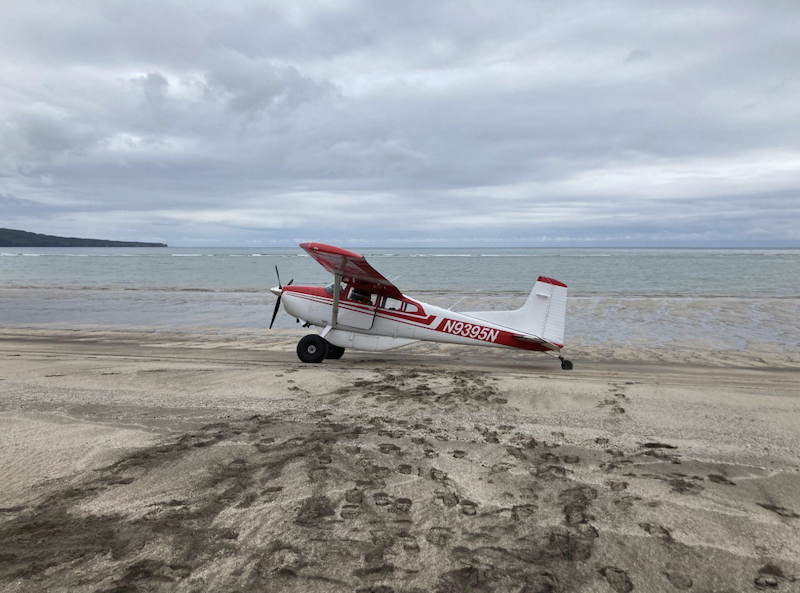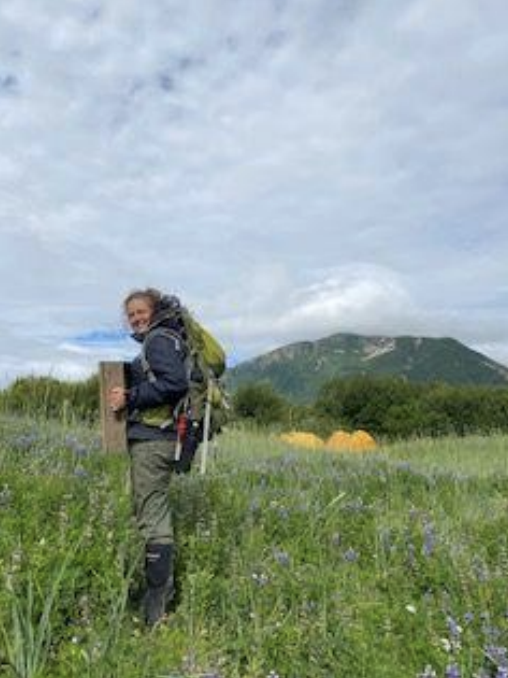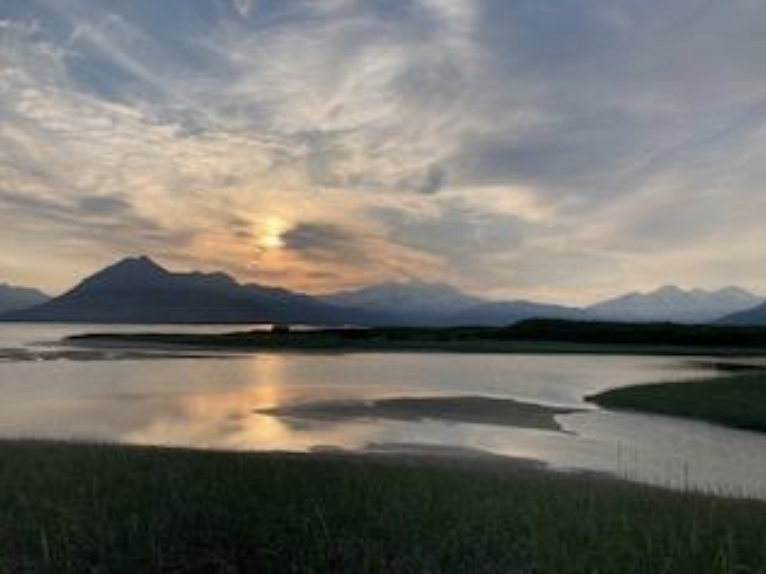Conducting Field Work at Katmai Bay
Written by: Madeline Jennings
My second, and longest, backcountry trip with the Katmai National Park Archaeological Crew was to Katmai Bay. We flew there and were dropped off on the beach, right in front of the ocean, which was really neat. I have learned since coming to Alaska that it truly is an amazing place, full of beautiful landscapes and a large variety of environments. Getting to fly in planes over the park is something that I am very grateful we get to do as part of the transportation to our work trips. For this stint in the field, we began the two weeks with myself, two of the NPS Archaeologists, a Wildlife Interpretation Ranger, and a Biologist. One of my favorite things about working in Katmai is the fact that I get to work with so many different and amazing people who study and work on really neat and important projects. This leading team was no different, and it was fun to get to conduct field work with them. Later, the Ranger and Biologist would leave and the other Archaeological Field Tech would come in.

The 185 that dropped us off on the beach at Katmai Bay
The Katmai Bay operations were quite a bit different from Savonoski, though we were still working on villages and other residential sites. The first big variance was that we set up a base camp on the beach of Katmai Bay, and a spike camp just over five miles away, closer to the sites we would be working on first. There was quite a bit of hiking and hauling gear involved in this process, and some of it was quite challenging, especially because there were wet areas that we walked through that were riddled with sinkholes, some of which pulled me in all the way to my hips. Granted, though, I am short.

Myself (Madeline Jennings) in front of our spike camp
The spike campsite was absolutely breathtaking; we were in view of the Valley of Ten Thousand Smokes, surrounded by mountains, and there was lupin everywhere. It was also conveniently located near the sites that we would be working on for the first portion of the trip. The nearest thing to us was what we have guessed to be a quarry site – a source area for materials for lithics. We found many stone tool flakes, a hammer stone, and what appeared to be a net sinker stone. Some of these were on the surface level, due to the erosion of the site, but some were only uncovered in unit excavations. It was very exciting to find these things, and I definitely got better at identifying debitage and flakes throughout this process. It was somewhat challenging because many of the rocks had natural angular break patterns, and many of the flakes were rather tiny.
As we did with Savonoski, we used the magnetometer to survey grids before deciding where to excavate. We were still looking for the largest anomalies in the data, as they are the things most likely to be some sort of hearth or other feature. Once we had surveyed all of the sites near our spike camp and some a ways away at another village area, we actually began to set up and dig excavation units. I encountered a new challenge while doing this in the form of pumice. Pumice is extremely abundant in Katmai Bay, and a bit of a pain when excavating. Some of the stratigraphical layers in our units were purely pumice or a sand and pumice mixture with a very high pumice ratio. Pumice is lightweight and does not hold together well, so while digging, the walls of the units would often shed pumice, and once we hit a certain depth and knocked the walls with our shovels, pumice would cave in and cover the bottom of the unit. There were two solutions to this. The first was to dangle your upper body into the unit and use a dustpan to clear the pumice, and the other was to open the units to 1 meter x 50 centimeters (our typical units were 50 cm x 50 cm).

The view from base camp
The sites that we were working on between our spike camp and base camp were also really interesting because we were less certain about the precise location of the actual sites, and we were racing against time. A marsh was quickly overtaking the forested area where the sites are and the units were not spared. When we ran the magnetometer survey of the sites (there were two), neither was covered in any water. However, when we returned after examining the data, the site that was in a lower topographical area was beginning to be overtaken by water. We opened up two units there, and both were stopped because they filled with water. One only made it down thirty centimeters. This grid did not yield any artifacts, but it did remind me of the importance of the work that we do on sites, as well as site preservation.
These units mostly uncovered small amounts of charcoal, and lithics. Soil samples were taken for later testing to learn more about the context of the sites and artifacts. Overall, it was a really rewarding, but very tiring trip. Katmai Bay was an amazing place to work, with a variety of sites and wildlife. I saw bears, porcupines, otters, wolves, bald eagles, seagulls, and an unfortunate amount of horseflies. I look forward to continuing to work here at Katmai and see even more amazing things while working to preserve and share the important cultural resources residing here!